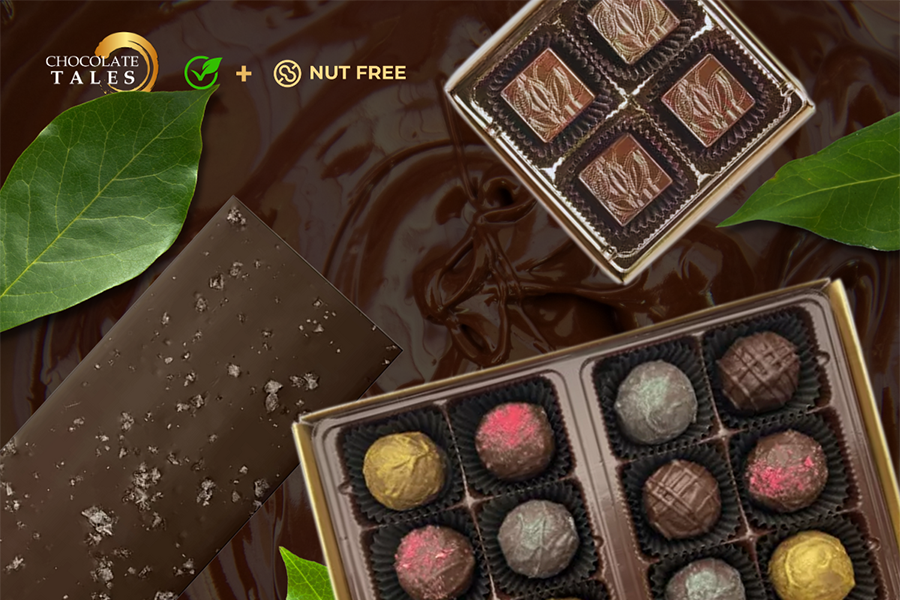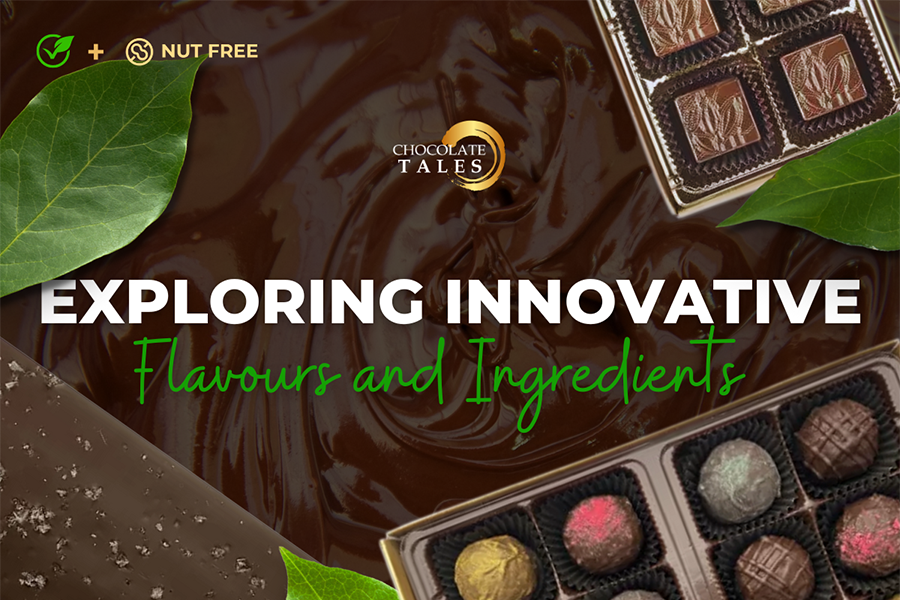The Rise of Chocolate Vegan
A new generation of chocolate makers is reimagining the possibilities of cacao free from dairy. Natural sweeteners are replacing refined sugar. Ethical and sustainable cacao sourcing is also gaining prominence. The result is gourmet vegan chocolate with a fuller, richer pure chocolate taste and intriguing new flavours.
Small-batch chocolate operations let craft chocolatiers experiment in ways mass production cannot. Limiting added oils and emulsifiers also helps the pronounced chocolate character shine. From dessert chefs to bean-to-bar startups, chocolate is being reinvented with plant-based ingenuity.
Infusing Global Flavors into Cacao
Chocolatiers are borrowing techniques from perfumers to infuse ethically sourced cacao with extracts that complement and accentuate chocolate’s inherent notes. Fruity and citrus flavours like blood orange, passionfruit, and cherry add tartness and acidity to balance chocolate’s bitterness. Warm spices like cardamom, cinnamon, and chilli pepper add depth and subtle heat.
Herbal and floral flavours from rose, lavender, mint, and chamomile introduce intriguing aromatic dimensions. The result is chocolate with a layered nuance more akin to wine-tasting profiles.
This flavour fusion approach allows for underscoring and rounding out the many flavour facets already in premium cacao. Elevating chocolate bars vegan from sensory experience brings more sophistication to the vegan chocolate canada landscape.
Creatively Blending Sweeteners and Sugars
Most dairy free chocolate replaces dairy milk or cream with plant-based alternatives like coconut, almond, oat, or soy milk. The natural creativity comes in how added sugars are handled. Some chocolatiers forego refined white sugar altogether, sweetening only with coconut palm sugar, date paste, or monk fruit extract. Maple, agave, and yacon syrups add distinctive flavours. Dried fruits like raisins, cranberries, and apricots blend sweetness with tart chewiness. Creative sweetener blending enhances complexity, balances healthfulness, and reduces the need for less natural emulsifiers. The result is chocolate with nuanced, food-based sweetness.
Adopting Heirloom Cacao Varietals
Another frontier in gourmet vegan chocolate is utilizing rare heirloom cacao strains instead of common bulk varieties. Each cacao “terroir” offers distinctive flavours shaped by climate, soil, and genetics.Some makers partner directly with vintage cacao farms, reviving near-lost strains organically in biodiverse settings. These trees yield cacao with more concentrated, fruit-forward taste profiles.
Single-origin bars allow tasting the unadulterated essence of exotic varietals from Venezuela to Madagascar to Papua New Guinea. Supporting vintage cacao preservation offers diversity and sophistication to the expanding vegan chocolate palette.
Innovations in Processing and Production

Makers are also innovating processing methods for fuller chocolate flavour without over-processing. Some utilize vintage stone mills to refine beans, retaining nuanced tastes gently. Others concur that recipes take much longer, allowing more delicate flavours to develop.
Handcrafting in micro batches allows control traditional factories cannot achieve. Careful temperature management prevents “burnt” notes. Higher cacao percentages reduce added ingredients that can mask the pure chocolate flavour. Developments in the manufacturing of alternative milk, such as high-fat vegan milk, have improved the mouthfeel and texture of dairy products. Technology and technique combine to create next-level vegan chocolate.
The Expanding Horizon of Vegan Chocolate
Whether infusing global spices, reinventing sweeteners, rediscovering heirloom cacao, or honing production methods, chocolate is being radically reimagined in the name of craftsmanship and flavour. The result is an artisanal chocolate renaissance unconfined by convention or commoditization.
For vegans, the booming creativity also means plant-based chocolate is claiming new culinary territory. The future of exceptional chocolate – one carefully sourced bean at a time – looks sweeter than ever.
Conclusion
The use of innovation by ethical producers with cacao enables the vegan chocolate market to grow in exciting new ways. Small-batch chocolate artisans are crafting sophisticated plant-based confections by returning to basics and reinventing processes. Their innovations highlight how cacao offers endless flavour complexity opportunities, mainly when sourced and handled carefully. Elevating chocolate to an art form through novel ingredients, heirloom beans, and mindful production points to a bright future for exceptional vegan chocolate.
FAQs
Q: Do Vegan Chocolate and vegan cake tend to be lower in calories than regular versions?
While recipes and brands vary, many vegan cakes and chocolates are comparable or slightly lower in calories due to not containing dairy or eggs, though ingredients like nut butter or coconut oil provide healthy fats.
Q: Do heirloom cacao strains make good vegan chocolate?
A: Their diversity and flavour complexity make vintage cacao ideal for high-quality vegan chocolate when processed carefully. Makers partner with farms specializing in rare and organic varietals.
Q: Is vegan chocolate healthier than regular chocolate?
A: It can be if dairy, emulsifiers, and refined sugars are avoided for whole-food ingredients. As with any food, check added sugars and fat content. Cacao itself offers antioxidants and minerals.
Q: How is high-fat vegan milk different?
A: Special processing better retains delicate proteins and nutrients in plant milk, allowing for a richer texture. It makes them better mimic whole dairy milk in vegan chocolate recipes.
Q: What is the difference between lactose free chocolate and dairy free chocolate?
A: Lactose free chocolate does not contain added lactose (milk sugar) but may still have other milk ingredients like milk fat or casein, and dairy free chocolate does not contain any milk or milk derivatives.


